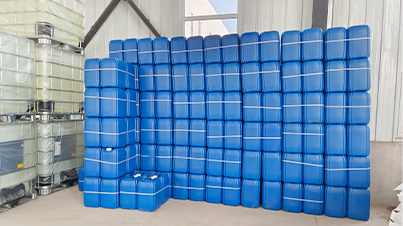Polyacrylamide Applications in Water Treatment and Environmental Remediation Processes
The Role of Polyacrylamide in Water Treatment
In recent years, the growing demand for clean water has led to significant advancements in water treatment technologies. Among various polymers, polyacrylamide (PAM) has gained prominence as an effective coagulant and flocculant in water treatment processes. This synthetic polymer serves a critical role in enhancing water quality by facilitating the removal of suspended solids and contaminants.
What is Polyacrylamide?
Polyacrylamide is a water-soluble polymer made from acrylamide monomers. This compound can exist in various forms, including anionic, cationic, and non-ionic, each serving specific functions depending on the treatment needs. Its unique chemical properties allow it to interact with particulate materials, promoting their agglomeration and settling.
Mechanisms of Action
The effectiveness of PAM in water treatment predominantly relies on its charge properties. Anionic PAM is typically used in environments where suspended solids are positively charged, as it provides the opposite charge, leading to electrostatic attraction. Conversely, cationic PAM is utilized in situations with negatively charged particles. This characteristic allows PAM to bridge particles together, forming larger flocs that can be easily removed from water through sedimentation or filtration.
In addition to electrostatic interactions, PAM also enhances the physical stability of sludge, resulting in easier dewatering processes. This property is particularly advantageous in wastewater treatment facilities, where the efficient removal of solids can reduce operational costs and improve the quality of the effluent.
polyacrylamide water treatment

Applications in Water Treatment
PAM finds diverse applications in water treatment processes including municipal wastewater treatment, industrial effluent treatment, and in the treatment of drinking water. In municipal systems, PAM effectively reduces turbidity by aggregating fine particles, hence improving water clarity. In industrial applications, it aids in the removal of oils and greases, heavy metals, and other harmful substances from wastewater.
Moreover, PAM is leveraged in the context of sludge management. As a flocculant, it enhances the consolidation and dewatering of sludge, reducing the volume and making disposal easier and more economically feasible. This efficiency is crucial for meeting environmental regulations and promoting sustainable practices.
Environmental Considerations
While PAM presents significant benefits in water treatment, there are certain environmental considerations to address. The monomer acrylamide is toxic and potentially harmful to aquatic life. Therefore, the use of PAM in water treatment should be carefully monitored, with special attention to the residual concentrations of acrylamide in treated water. Manufacturers are increasingly developing techniques to minimize these risks, with focus on producing PAM formulations that reduce or eliminate acrylamide residues.
Conclusion
The application of polyacrylamide in water treatment processes has revolutionized the way we manage water quality challenges. Its ability to enhance the removal of contaminants and improve sludge management is invaluable in both municipal and industrial contexts. Nevertheless, it is important to continue researching and improving the safety and environmental profiles of such chemicals. As we strive for better water treatment solutions, polyacrylamide will remain a key player in achieving sustainable water management practices, ensuring that accessible, clean water is available for future generations. The development and refinement of PAM technologies will be instrumental in meeting global water treatment demands while balancing ecological health.
-
lk-319-special-scale-and-corrosion-inhibitor-for-steel-plants-advanced-solutions-for-industrial-water-systemsNewsAug.22,2025
-
flocculant-water-treatment-essential-chemical-solutions-for-purification-processesNewsAug.22,2025
-
isothiazolinones-versatile-microbial-control-agents-for-industrial-and-consumer-applicationsNewsAug.22,2025
-
scale-inhibitor-key-solutions-for-water-system-scale-preventionNewsAug.22,2025
-
organophosphonates-versatile-scale-inhibitors-for-industrial-water-systemsNewsAug.22,2025
-
scale-and-corrosion-inhibitor-essential-chemical-solutions-for-water-system-maintenanceNewsAug.22,2025





